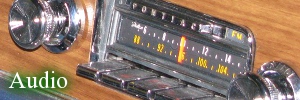















Honda Celebrates 25 Years of Manufacturing in US |
|---|
 Topics: Honda
Topics: Honda
|
John Birchard
Voice of America
Washington, D.C.
September 29, 2004
Audio Version 465KB RealPlayer
It was 25 years ago, on September 10, 1979, that Honda became the first Japanese automaker to open a manufacturing facility in the United States. In the intervening quarter century, the company has established itself as one of the leading automakers in the world.
That first plant in Marysville, Ohio, produced motorcycles. The following year, 1980, Honda announced plans to build an auto assembly plant. Two years later, Accord sedans began rolling off the Marysville line and by 1989, the Accord had become the best-selling car in the United States.
Founded by an engineer, Soichiro Honda, the company has thrived on leading-edge engineering, such as how to extract big horsepower from small engines while achieving excellent fuel economy and low pollution emissions. Keith Crain, publisher of the influential Automotive News, is an admirer.
"Their products have always been extremely well-received and the reliability and the high quality have helped them make a great success of their company over the last 50 years," says Mr. Crain.
In 2004, Honda has nine factories in North America, five of which produce motor vehicles or their components. They build engines and transmissions here. The company's initial investment of $35 million has grown to $7.2 billion.
In addition to being first among Japanese automakers to start making its products in the United States, Honda introduced a number of innovations in manufacturing that others have since copied. One is called "the Honda way."
"One is the team concept where people are recognized for their abilities and also expected to participate and become involved as part of a team to solve problems," company spokesman Ron Lietzke explains.
Another aspect of the Honda way, says Ron Lietzke, that has been admired and copied by competitors is the rolling model change. "Typically, plants would shut down to re-tool for a new model. Here at Honda, it's important to keep your production lines going, because when you're producing products, you're selling them and making money," he adds. "So, Honda developed techniques to introduce new models without stopping the production line."
Another area where Honda set the pattern for other import brands is in labor relations. None of Honda's workers is represented by the United Auto Workers (UAW) union. The union has tried repeatedly over the years to organize Honda workers, but so far, it's no go.
We asked Keith Crain of Automotive News if he thinks the UAW will ever win a union vote among Honda employees.
"No, I don't. I think that the workers at all these 'transplants' [import brand American plants], whether it's German, Japanese or Korean, seem to be quite pleased with their employer and there's been no dissatisfaction," says Mr. Crain.
Despite repeated attempts, the UAW did not respond to our requests for their comments on Honda for this report.
Another group of interested observers is the competition. We asked Mr. Crain how the Big Three see Honda.
"Well, I think the Detroit automakers view Honda very much as a worthy opponent," he says. "Probably they would be more than happy if they [Honda] weren't quite so successful."
Once known primarily as a maker of motorcycles, Honda's line of products includes, in addition to cars, light trucks, motorcycles, personal watercraft, lawn mowers, power generators, all-terrain vehicles, snow blowers and hedge trimmers. On the horizon, there may be a Honda-powered executive turbo-fan airplane coming soon to an airport near you.
Honda now employs more than 25,000 people in the United States.
More than three-quarters of all Honda and its luxury brand Acura vehicles sold in North America are built in the U.S. Last year, those sales amounted to 1.3 million units.
